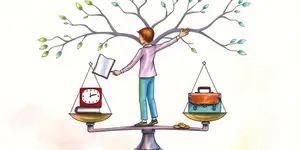
Every ambitious goal carries the risk of unexpected hurdles. Whether you’re launching a startup, pursuing a creative passion, or aiming for personal transformation, setbacks are not only possible—they’re inevitable. By acknowledging this reality and embedding strategies to address it, you transform obstacles into milestones on your path to success.
Setbacks are not final verdicts; they are data points that guide you toward smarter decisions. In business and personal growth alike, encountering obstacles becomes an opportunity to refine strategies, bolster confidence, and cultivate resilience skills that carry you through future challenges.
Psychological research shows that growth often occurs at the threshold of discomfort. When you confront difficulties directly, you expand your capacity for innovation and deepen your self-awareness.
Planning begins with realistic expectations. When you recognize that obstacles will arise, you can design contingency measures that keep projects on track. In team environments, fostering open dialogue about potential failures breaks the stigma around admitting vulnerabilities.
Embedding structured review processes—such as retrospectives or "lessons learned" sessions—ensures that each setback becomes a springboard. Through systematic reflection, teams can identify root causes and prevent repetition of the same mistakes.
Implement simple templates or digital logs to record:
By maintaining accessible records, you build an institutional memory that fuels continuous improvement.
A growth mindset reframes failure as information, not defeat. Each challenge conquered—no matter how small—fortifies your psychological “muscle” to tackle tougher obstacles down the road.
Begin with manageable risks: volunteer for a new responsibility, experiment with an untested idea, or solicit honest feedback on a draft. Incremental victories accumulate into deeper understanding and confidence.
Effective leaders don’t deflect blame; they own outcomes and inspire trust through transparency. Accountability leads to better solutions and reinforces a sense of collective purpose.
Establish clear communication channels for:
History is rich with individuals who turned failure into a defining strength. Bill Belichick was fired from one team before becoming the NFL’s winningest coach. Walt Disney faced bankruptcy and was once told he lacked creativity. Steve Jobs was ousted from Apple and then returned to redefine the tech landscape. Each of these figures demonstrates that failure is not defeat—it’s a starting point.
Thomas Edison famously said, “I have not failed. I've just found 1,000 ways that don't work.” In every apparent setback, there lies an insight waiting to be discovered.
When setbacks occur, pause to extract insights rather than assigning blame. Use the lessons to adjust your plan and move forward with renewed clarity.
Ultimately, planning for setbacks transforms them from stumbling blocks into stepping stones. By embedding reflection, accountability, and transparent communication into your journey, you not only survive obstacles—you thrive because of them. Every setback becomes a testament to your evolving strength and creativity, guiding you toward the ultimate destination: sustained, meaningful success.
References













